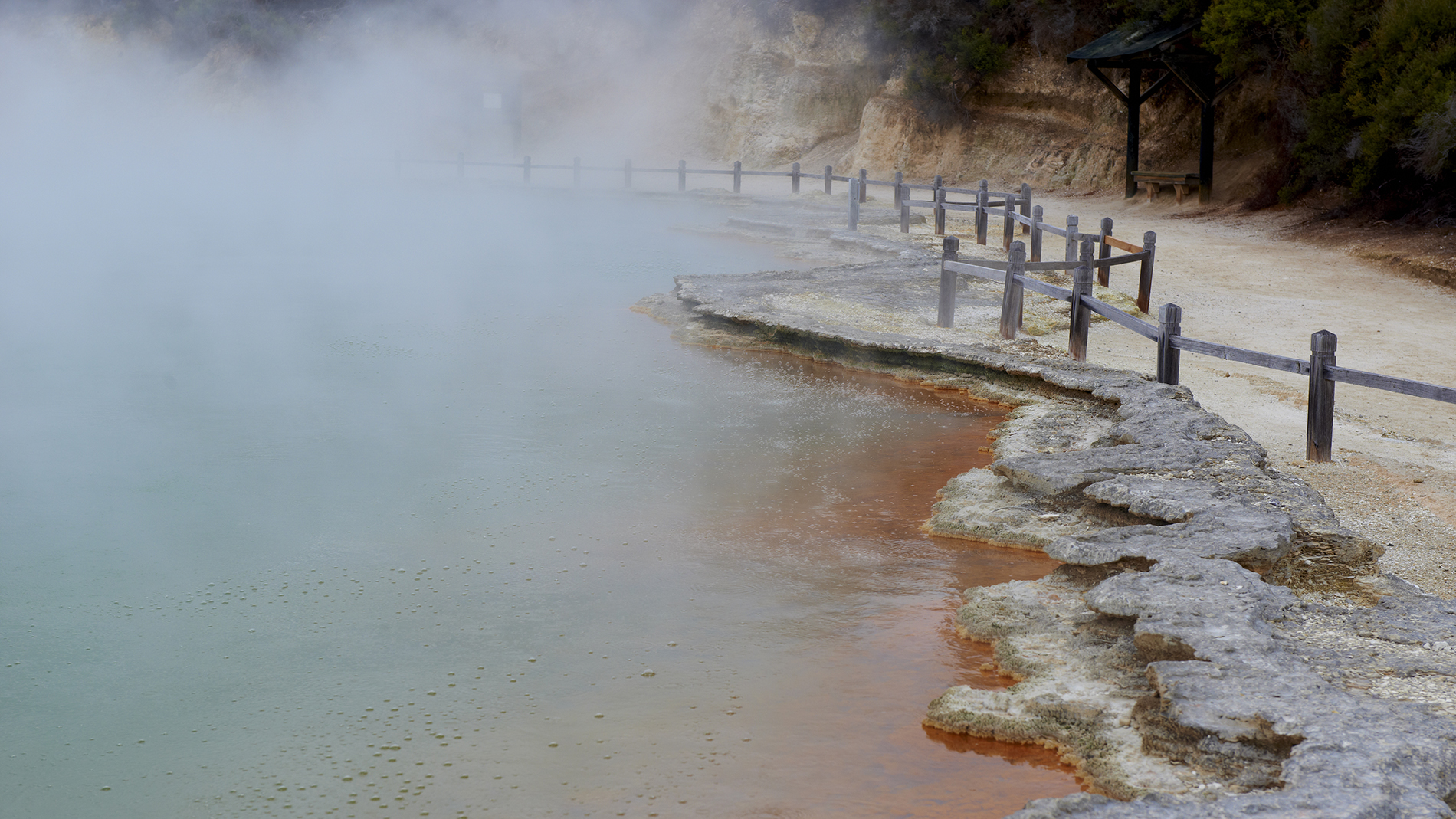Development of geothermal areas in the Waikato region
The development of geothermal areas is increasing. Changes in land use can damage delicate sinter formations and geothermal ecosystems. Careful land management can protect delicate geothermal areas.
As urban communities expand and forestry increases, more of the land around geothermal features is developed. There is little information on the rate and nature of land use changes affecting geothermal resources in the region.
We do know that geothermal ecosystems are often extremely fragile. Relatively small changes in the water level, water composition and temperature can be catastrophic.
Effects of land use
Different land uses affect geothermal areas in different ways.
Subdivisions may affect geothermal areas by changing the natural water flows, and destroying or degrading geothermal features. Channelling stormwater into the Waipahihi (Onekeneke) and Otumuheke geothermal streams in Taupo has lowered temperatures and increased sediment in the streams.
Some farming activities can damage geothermal areas and plants, for example:
- Applying fertiliser increases the amount of nutrients in geothermal pools and contributes to algal blooms.
- Cattle have trampled areas of sinter at Waikite.
- Goats, sheep and cattle graze around and on geothermal features in Mokai, Reporoa and Te Kopia.
Draining and cultivating the land can also adversely affect geothermal areas. At Reporoa, drainage has left areas of sinter dry and destroyed springs and dependent ecosystems. Cultivation disturbs native geothermal plants, allowing pines, blackberry and other weeds to invade. The subsequent spraying of weeds has also damaged native geothermal plants at various sites in Taupo.
Other land uses affecting geothermal areas include:
- The use of geothermal areas and features as waste dumps.
- Forestry, for example, in Waiotapu pine trees have become established and geothermal pools and sinter terraces have been damaged.
- Tourism.
Find out more about geothermal tourism.
Looking after geothermal areas
Geothermal areas can be protected by:
- Fencing off sensitive areas to keep stock off delicate formations and rare plants.
- Minimising cultivation and other disturbances that can encourage introduced weeds.
- Taking care when using agrichemicals (such as pesticides) so that non-target plants and animals are not affected.
The Department of Conservation manages some geothermal areas as reserves, and works with landowners to identify and protect geothermal areas on private land through Protected Natural Area reports.
Waikato Regional Council has classified geothermal systems to determine the most suitable management for different areas. We regulate development in geothermal areas through the resource consent process.
Waikato Regional Council is also involved in other ways to protect and understand the geothermal resource:
- We have helped landowners to fence off some geothermal features from stock.
- We regularly monitor many geothermal features to look for any changes in surface activity and to ensure that inappropriate land use activities are not degrading them.
- We have started research on aquatic organisms living in geothermal ecosystems.
- We provide funding support through the Environmental Initiatives Fund for projects designed to enhance or educate about the environment.
- We run education seminars on the value of geothermal vegetation, and how to protect it.

